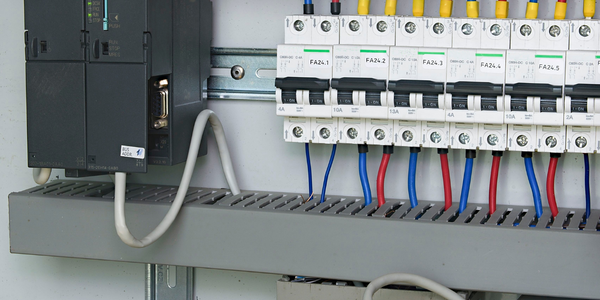Customer Company Size
Large Corporate
Region
- Asia
Country
- Korea
Product
- JDA® Sales & Operation Planning
- JDA® Supply Chain Planner
Tech Stack
- Supply Chain Management Software
- Demand Management Software
Implementation Scale
- Enterprise-wide Deployment
Impact Metrics
- Cost Savings
- Productivity Improvements
- Customer Satisfaction
Technology Category
- Functional Applications - Enterprise Resource Planning Systems (ERP)
Applicable Industries
- Electronics
Applicable Functions
- Procurement
- Logistics & Transportation
Use Cases
- Supply Chain Visibility
- Demand Planning & Forecasting
Services
- System Integration
About The Customer
Doosan Electro-Materials is a Korea-based company that focuses on the production of high-quality copper clad laminate (CCL) and flexible copper clad laminate (FCCL), which are used in the production of printed circuit boards for mobile phones, televisions, and refrigerators. It is one of only a few manufacturers in the world that can provide a full range of CCLs, from simple single-sided CCL to high-performance CCL for packaging substrate. Because of this diversity, Doosan has a complex supply chain. In 2007, the company realized that it had too much inventory, which was adversely affecting its cash flow and the availability of working capital.
The Challenge
Doosan Electro-Materials, a Korea-based company specializing in the production of high-quality copper clad laminate (CCL) and flexible copper clad laminate (FCCL), faced significant challenges with its inventory management. The company's large stocks of inventory were inhibiting cash flow, hurting profitability, and creating complex supply chain issues. The fast pace of innovation in the electronics industry, where Doosan operates, leads to rapid component obsolescence, making high inventory levels particularly risky. In 2007, Doosan's management team decided to initiate significant changes to optimize its supply chain processes and implement new demand management and product planning strategies. The company's inventory problems were exacerbated by difficulties with its demand forecasting systems, which could only make a demand plan for the next four weeks.
The Solution
Doosan carried out a full evaluation of a number of different supply chain management solutions. The manufacturer evaluated technology providers that had strong experience in solving complex supply chain challenges and employed industry best practices that would help Doosan to completely transform its processes and systems. Doosan selected JDA Supply Chain Planner to model its entire supply chain and optimize inventories, production, distribution, and transportation. Doosan also implemented JDA Sales & Operations Planning (S&OP), an advanced demand management solution that enables tight integration between plan and execution and extends traditional demand-supply matching to include reconciliation with financials. The implementation of capabilities from JDA’s Manufacturing Planning solution prompted Doosan to carry out an internal reorganization and introduce new processes for demand management and production planning.
Operational Impact
Quantitative Benefit

Case Study missing?
Start adding your own!
Register with your work email and create a new case study profile for your business.
Related Case Studies.

Case Study
Remote Temperature Monitoring of Perishable Goods Saves Money
RMONI was facing temperature monitoring challenges in a cold chain business. A cold chain must be established and maintained to ensure goods have been properly refrigerated during every step of the process, making temperature monitoring a critical business function. Manual registration practice can be very costly, labor intensive and prone to mistakes.

Case Study
Predictive maintenance in Schneider Electric
Schneider Electric Le Vaudreuil factory in France is recognized by the World Economic Forum as one of the world’s top nine most advanced “lighthouse” sites, applying Fourth Industrial Revolution technologies at large scale. It was experiencing machine-health and unplanned downtime issues on a critical machine within their manufacturing process. They were looking for a solution that could easily leverage existing machine data feeds, be used by machine operators without requiring complex setup or extensive training, and with a fast return on investment.

Case Study
Cloud Solution for Energy Management Platform-Schneider Electric
Schneider Electric required a cloud solution for its energy management platform to manage high computational operations, which were essential for catering to client requirements. As the business involves storage and analysis of huge amounts of data, the company also needed a convenient and scalable storage solution to facilitate operations efficiently.

Case Study
Leveraging the IoT to Gain a Competitive Edge in International Competition
Many large manufacturers in and outside Japan are competing for larger market share in the same space, expecting a growing demand for projectors in the areas of entertainment, which requires glamor and strong visual performance as well as digital signage that can attract people’s attention. “It is becoming more and more difficult to differentiate ourselves with stand-alone hardware products,” says Kazuyuki Kitagawa, Director of Service & Support at Panasonic AVC Networks. “In order for Panasonic to grow market share and overall business, it is essential for us to develop solutions that deliver significant added value.” Panasonic believes projection failure and quality deterioration should never happen. This is what and has driven them to make their projectors IoT-enabled. More specifically, Panasonic has developed a system that collects data from projectors, visualizes detailed operational statuses, and predicts issues and address them before failure occurs. Their projectors are embedded with a variety of sensors that measure power supply, voltage, video input/ output signals, intake/exhaust air temperatures, cooling fan operations, and light bulb operating time. These sensors have been used to make the projector more intelligent, automatically suspending operation when the temperature rises excessively, and automatically switching light bulbs. Although this was a great first step, Panasonic projectors were still not equipped with any capability to send the data over a network.









